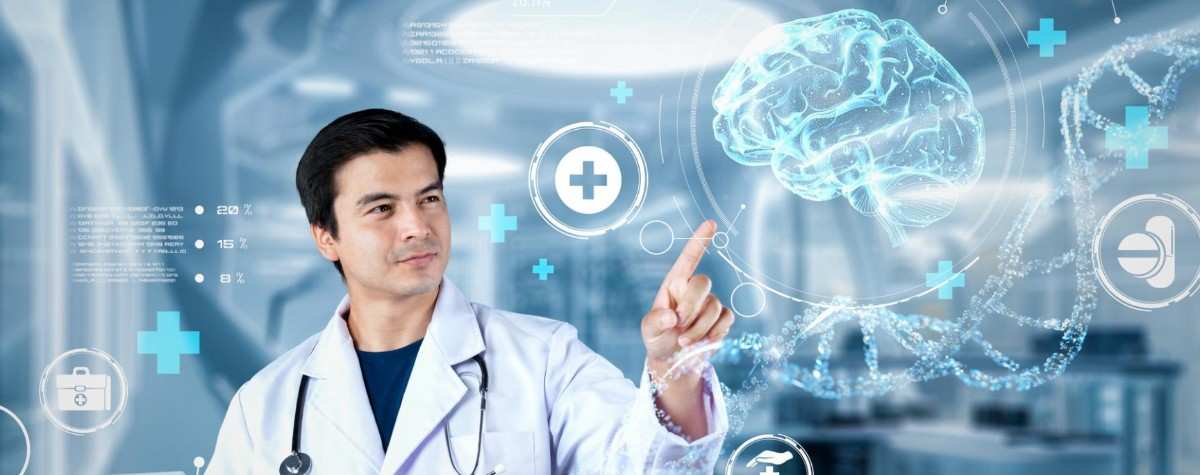


Uncover the future of AI in healthcare with insights into AI healthcare innovations like generative AI, computer vision, NLP, and more.
Healthcare has been experiencing its most transformative period since the dawn of modern medicine. As we near 2026, artificial intelligence is now a real force. It is changing every part of our lives, including medical care. The future of AI in healthcare offers unmatched accuracy, effectiveness, & affordability. It will change how we diagnose, treat, and prevent illnesses.
From paper-based records to electronic health records (EHRs), from siloed lab systems to integrated platforms, the digitization journey has been underway. Yet, what we’re witnessing now is not just digitization, but intelligence—the infusion of AI into core clinical, operational, and patient-facing systems. In this article, we will uncover 7 AI healthcare innovations making a difference and discover how they’ll shape 2026.
The healthcare landscape in 2026 is being reshaped by AI-driven breakthroughs. From automation and predictive analytics to generative AI, these seven innovations are setting new standards in precision, speed, and patient outcomes.
Generative AI, or GenAI, is transforming the future of AI in healthcare. It’s at the leading edge of healthcare AI trends in 2026. Generative models stand out from regular AI tools. While conventional AI only classifies or predicts, these models can create new content. They can create clinical notes and synthetic patient data. They can also develop new drug compounds for targeted therapies. They are among the most significant AI healthcare innovations, both in practice and research.
In clinical documentation, GenAI delivers major efficiency gains:
In drug discovery, the impact is equally significant:
Biopharmaceutical companies will rely on AI to design drugs by 2026. This will change the costs and timelines of drug development. These advancements show how generative AI is changing medicine. They push innovation in the entire healthcare ecosystem.
Computer vision has changed from research to a key AI healthcare innovation. Computer Vision (CV) enables AI systems to perceive and comprehend images and videos. It now plays a vital role in clinical practice. These systems are no longer just extra tools. They are clinically validated. In many cases, they match or even beat human experts in accuracy. This includes CT scans, X-rays, MRIs, and pathology slides. They spot patterns and odd signs linked to cancer, heart disease, and other major health problems. The strength of these systems comes from three main features:
Real-world uses are already changing clinical workflows. Google’s DeepMind Health discovered that AI can detect eye diseases in retinal scans as effectively as leading specialists.
In the future, healthcare AI will grow exponentially. By 2026, almost 90% of hospitals will have adopted AI-driven diagnostics and remote monitoring technologies. The shift heralds a shift from reactive treatment models to proactive, preventative care.
NLP equips machine learning to read, interpret, & generate human language. In healthcare, it means several critical applications:
The trend in healthcare AI trends in 2026 will push NLP toward greater clinical context awareness & multimodal alignment (e.g., combining notes + imaging + labs). Models will also better understand medical jargon, negations, temporal constraints, and causal inference — improving safety and relevance.
AI in surgical robotics drives precision medicine. It combines mechanical accuracy with smart decisions. The MISSO Robotic System helps with custom pre-surgical planning. It ensures accuracy in complex procedures, like joint replacements. This way, you get reliable results. The market is booming; with forecast from $5.16 billion in 2021 to nearly $21 billion by 2030. This shows strong trust in AI healthcare innovations and AI-enhanced surgical tools.
Key advantages of AI-powered surgical systems include:
New platforms are advancing AI-powered surgical metaverses. These immersive spaces blend AI and extended reality for hands-on training and real-time 3D guidance. Organizations must align development with strong AI governance frameworks for medical devices to ensure safety to follow healthcare AI trends in 2026.
Wearables and implantable sensors generate streams of physiological data: heart rate, oxygen saturation, ECG, glucose, motion, etc. The next wave is edge AI — processing and acting on data locally (on the device) rather than routing everything to the cloud. Applications include:
By 2026, these systems will blend advanced signal processing, anomaly detection, and personalization (models that learn each patient’s “baseline”). Latency, bandwidth, and privacy risk are all decreased by Edge AI.
To predict future events or hazards, predictive analytics use historical data. In the medical field, this comprises:
